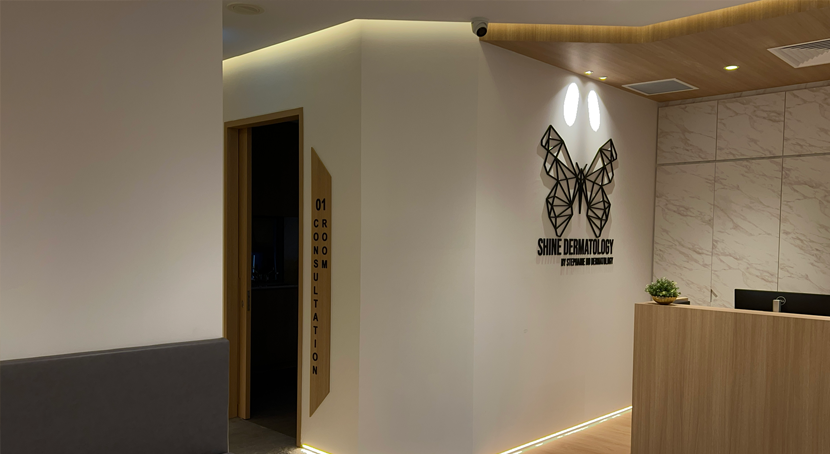What Are Face Rejuvenation Treatments?
Face rejuvenation treatments are minimally invasive procedures designed to reverse signs of aging by addressing structural collagen loss, volume depletion, and epidermal damage. These treatments work synergistically to restore facial harmony, leveraging advanced technologies like Picosecond laser to improve pigmentation and texture, injectable hyaluronic acid for volume, botulinum toxin to relax dynamic wrinkles, and RF microneedling to tighten lax skin. Each modality targets specific skin layers to promote cellular renewal and long-term rejuvenation.
Key Treatments & Their Targeted Applications
Face rejuvenation protocols are customized based on skin type, aging pattern, and patient goals. Below, we explore advanced modalities that address epidermal, dermal, and muscular aging factors.
Picosecond Laser (e.g., PicoWay): Pigmentation & Skin Rejuvenation
Mechanism: Uses ultra-short pulses to shatter pigment and stimulate collagen synthesis.
Best For: Pigmentation, melasma, tattoos, fine lines, and texture.
Protocol: 3–5 sessions, spaced 4–6 weeks apart; minimal downtime.
Injectable Hyaluronic Acid Fillers: Volumetric Restoration
Mechanism: Cross-linked HA restores facial structure and hydration.
Best For: Hollow temples, nasolabial folds, or lip enhancement.
Protocol: 1–2 sessions annually; results last 9–18 months.
Botulinum Toxin Injections: Dynamic Wrinkle Reduction
Mechanism: Temporarily relaxes muscle contractions to soften lines.
Best For: Forehead wrinkles, glabellar lines, and crow’s feet.
Protocol: 1 session every 3–4 months; effects begin in 3–7 days.
Sylfirm X: RF Microneedling with Subdermal Remodeling
Mechanism: Microneedles deliver bipolar RF to stimulate collagen and tighten skin.
Best For: Laxity, fine lines, pore size.
Protocol: 1–3 sessions; improvements peak at 3 months.
When to Consider Face Rejuvenation
Face rejuvenation is ideal for patients seeking to address age-related changes such as collagen depletion, volume loss, and epidermal damage.
-
Early Aging (20s–30s): Prevention and maintenance
-
Moderate Aging (40s–50s): Volume replacement, skin tightening
-
Advanced Aging (60s+): Multimodal correction for sagging and deep wrinkles
Recommended Sessions & Recovery Timeline
-
Picosecond Laser: 3–5 sessions; downtime: 1–2 days redness
-
Fillers: 1–2 sessions yearly; downtime: 24–48 hours swelling
-
Botulinum Toxin: Quarterly; no downtime
-
RF Microneedling: 1–3 sessions; 2–5 days downtime
Potential Risks & Safety Measures
-
Lasers: Hyperpigmentation (Fitzpatrick IV–VI); mitigated by pre-treatment protocols
-
Fillers: Vascular occlusion (rare); managed with cannula and reversal agents
-
Botulinum Toxin: Ptosis; avoided through precise dosing
FAQs
-
What’s the difference between neuromodulators and fillers?
Neuromodulators (e.g., botulinum toxin) relax muscles to reduce expression lines such as forehead lines and crow’s feet. Fillers, on the other hand, restore volume in areas like cheeks and lips. Used together, they offer comprehensive rejuvenation.
-
Are these treatments painful?
Most treatments are well tolerated. Numbing cream is applied before lasers and RF microneedling. Fillers and botulinum toxin use fine needles and may include anesthetic agents. Discomfort is typically minimal.
-
How soon will I see results?
Neuromodulators start working within 3–7 days. Fillers offer immediate results, though swelling may obscure final appearance initially. Laser and RF microneedling results build progressively over 4–12 weeks.
-
Can I combine multiple treatments?
Yes. Many patients benefit from a multimodal approach, such as combining botulinum toxin with fillers, or lasers with microneedling. Treatments can be spaced or layered based on clinical judgment.
-
Are results permanent?
Results are long-lasting but not permanent. Botulinum toxin typically lasts 3–4 months, fillers 9–18 months, and collagen-stimulating treatments like lasers or RF may maintain results for 1–2 years with maintenance.
-
Is face rejuvenation safe for dark skin?
Yes. Techniques and devices at Shine Dermatology are selected for safety across all skin tones. Picosecond lasers and RF microneedling are well-tolerated in Fitzpatrick IV–VI skin when appropriate settings are used.
-
What’s the downtime for each treatment?
Most procedures involve minimal downtime. Lasers may cause redness for 1–2 days; RF microneedling for 2–5 days. Fillers can cause mild swelling or bruising, while botulinum toxin has no downtime.
-
How should I prepare for RF microneedling?
Avoid sun exposure, retinoids, and anti-inflammatories for a few days prior. After treatment, follow post-care instructions carefully including sun protection, gentle skincare, and sleeping on your back.
-
Can men benefit from these treatments?
Absolutely. Face rejuvenation can soften harsh lines, refresh tired features, and maintain a masculine profile. Treatments are adjusted to complement male facial anatomy and aesthetic preferences.
-
How long should I wait between treatments?
Some treatments can be performed on the same day. Others should be spaced by 1–2 weeks. For example, neuromodulators can be done before or after fillers. Laser and RF sessions are usually spaced 4–6 weeks apart.
Book a Consultation Today!
Contact us today to design a face rejuvenation plan tailored to your skin’s unique needs.



